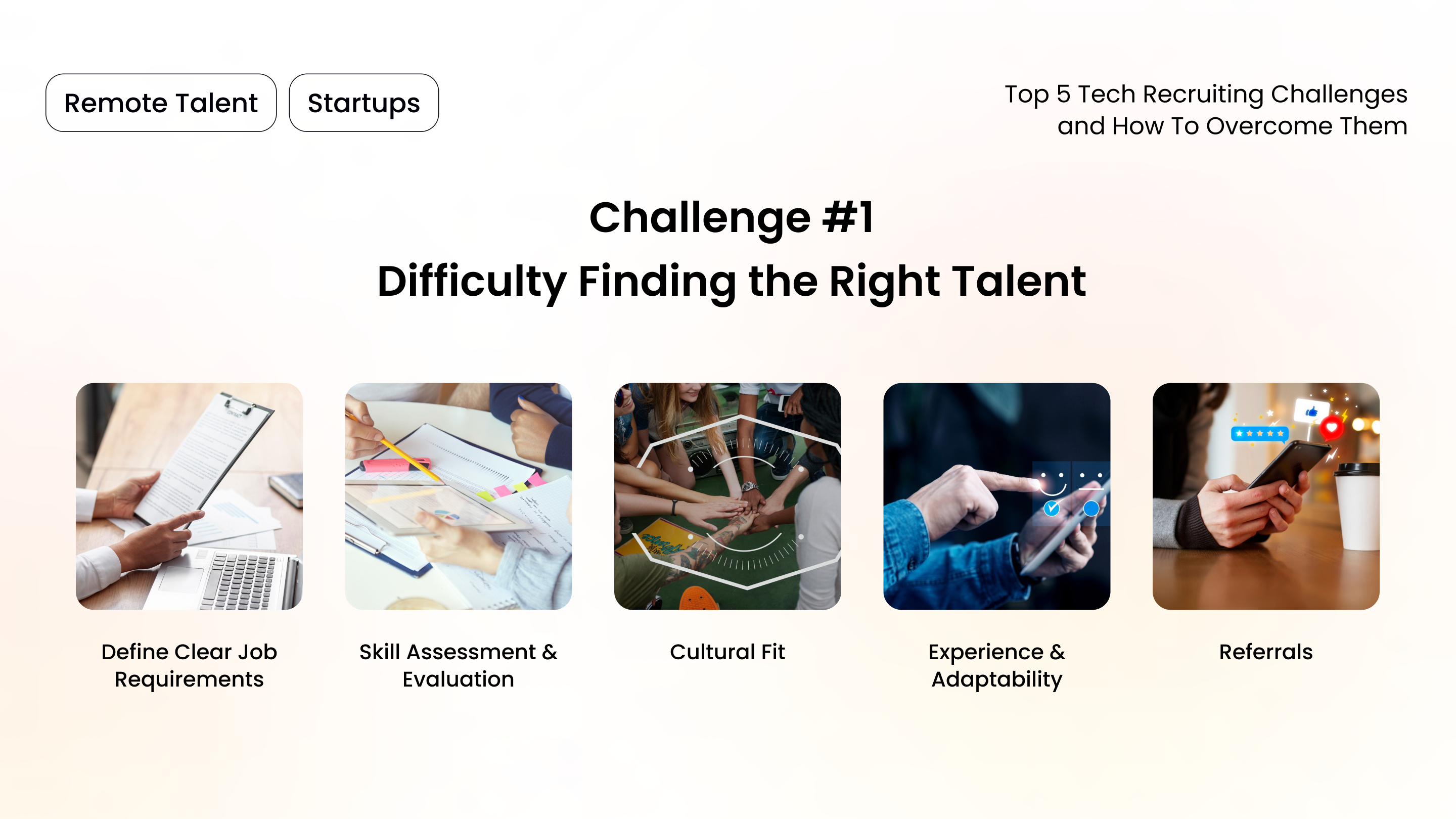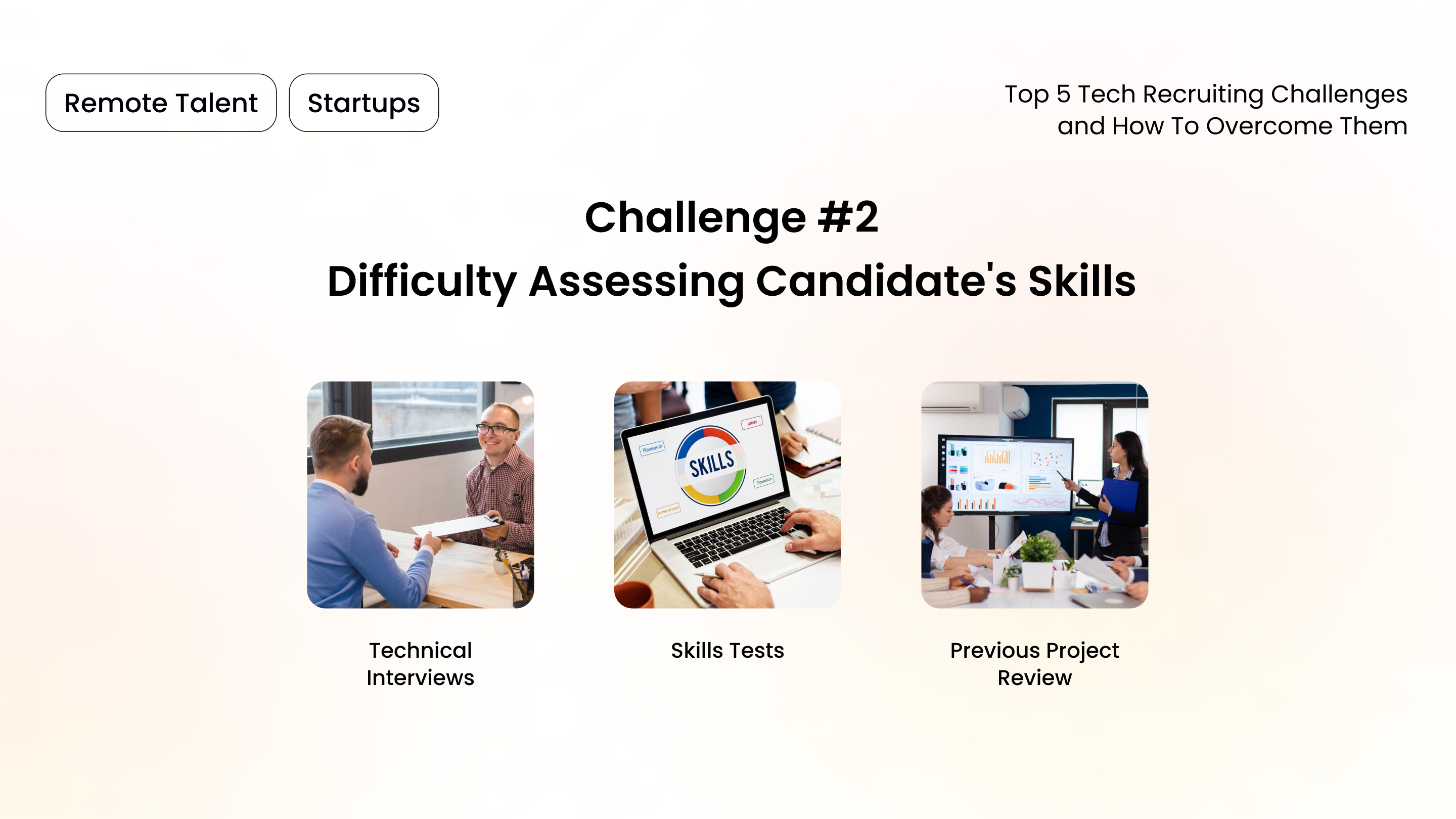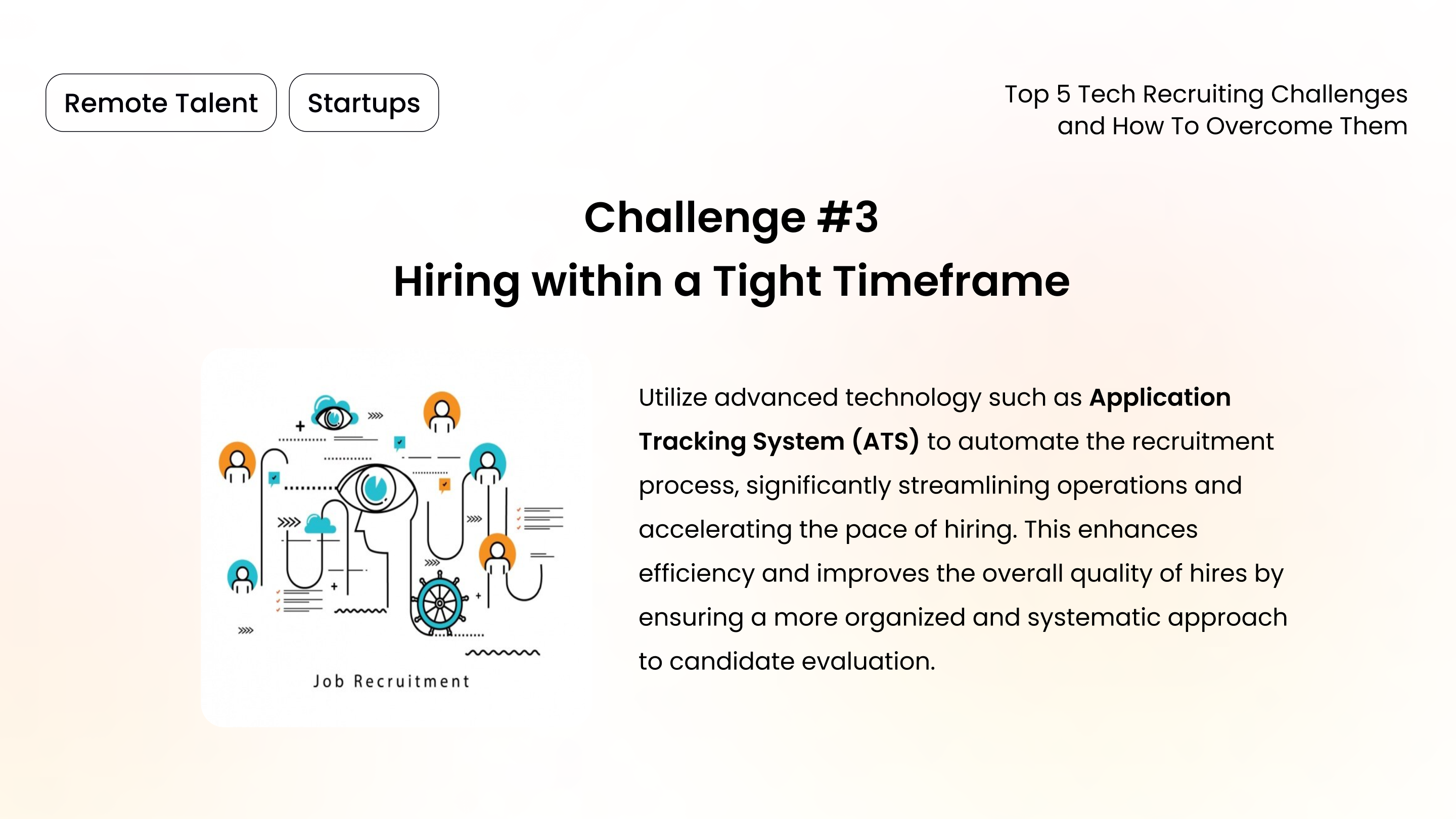In the rapidly evolving digital era, attracting and retaining top tech talent has become paramount for organizational success, innovation, and maintaining a competitive edge. The surge in demand for skilled technology professionals has intensified the competition in the recruitment landscape for companies.
According to a comprehensive 2022 survey involving nearly 2,000 digital leaders from 83 different countries, a staggering 70% of them reported that a shortage in digital skills is hampering their ability to adapt to the swift pace of technological advancement.
This challenge is further exacerbated for organizations outside the conventional tech domain, where attracting tech-savvy individuals becomes increasingly manageable.
Faced with challenges in attracting in-demand tech talent, companies must refine their approaches to thrive in a competitive arena. In this article, we will explore the top 5 challenges obstructing the tech talent acquisition process and provide practical strategies to effectively overcome these hurdles from Innovators Hub Asia’s TalentCloud Service.
Challenge 1: Difficulty Finding the Right Talent
The search for the perfect tech candidate is often likened to the challenging task of identifying ideal candidates.
Recruiters are faced with the challenge of identifying individuals who don’t just have the advanced technical skills necessary for the job but also embody the qualities that match the company’s culture. These candidates must be able to seamlessly integrate into the team and contribute significantly towards realizing the company’s vision and goals.
Finding such a well-rounded candidate requires a meticulous and strategic approach to the recruitment process.

The solution:
- Define Clear Job Requirements: Craft detailed job descriptions that outline specific skills, experience, roles, and responsibilities clearly. This attracts the right candidates who match the job perfectly.
- Skill Assessment & Evaluation: Use comprehensive assessment tools to objectively evaluate candidates’ technical skills and problem-solving abilities. This may include technical interviews, practical tasks, or standardized tests for a fair evaluation.
- Cultural Fit: Include questions and activities in the interview process to determine if a candidate’s values and work style match the company’s. Assessing cultural fit is key for long-term satisfaction and retention.
- Experience & Adaptability: Seek candidates with a solid track record and the flexibility to adapt to new technologies and work environments. Adaptability is essential in fast-paced settings.
- Referrals: Use your network, current employees, and industry contacts to find candidates with trusted endorsements. Employee referral programs are effective, encouraging recommendations from current employees who understand the company culture and job needs.
Challenge 2: Difficulty Assessing Candidate’s Skills
In the rapidly changing landscape of technology, recruiters, especially those working for startups with limited resources, face a significant challenge in assessing a candidate’s current skills and predicting their future potential.
The pace at which new technologies emerge and evolve makes it particularly daunting to assess a candidate’s current technical skills and their potential to learn and adapt to new technologies.

Solutions:
- Technical Interviews: Utilize in-depth interviews to thoroughly assess candidates’ grasp of essential technical concepts and their ability to apply these concepts in practical scenarios.
- Skills Tests: Carefully design technical tests that mirror the real-life challenges the candidate will likely encounter on the job, ensuring these assessments are both relevant and rigorous.
- Previous Project Review: Conduct a detailed analysis of past projects candidates have worked on to gauge their problem-solving abilities and creativity in overcoming technical hurdles.
Challenge 3: Hiring within a Tight Timeframe
Slow and cumbersome recruitment processes can significantly delay the acquisition of vital tech talent, potentially causing companies to miss out on top candidates in a highly competitive market. This can result in a loss of momentum and hinder growth, emphasizing the need for streamlined hiring practices.
Solution:

Utilize advanced technology such as Application Tracking System (ATS) to automate the recruitment process, significantly streamlining operations and accelerating the pace of hiring. This method not only enhances efficiency but also improves the overall quality of hires by ensuring a more organized and systematic approach to candidate evaluation.
Challenge 4: Tech Talent is Expensive
When demand outstrips supply, prices inevitably rise. In the tech industry, this principle has led to steady growth in salaries over the past twenty years, with some key positions seeing surges of up to 20% from 2020 to 2022 alone.
Smaller organizations frequently find themselves unable to compete with tech giants for the best candidates, as these larger companies can afford the high salaries that top talent commands.
Solution:
- Expand your talent pool by considering remote candidates: You can access a much wider developers pool if you expand your search beyond your geographic area. Not only does this give you a better chance of landing a great candidate, but you might even be able to potentially find them at a more competitive rate. This strategy not only diversifies your team but also brings in unique talents who can introduce new perspectives.
- Optimize Recruitment Processes: Streamlining the recruitment process is crucial for reducing both time and associated costs, thereby enhancing the company’s competitiveness. This could involve automating certain steps, improving communication channels with candidates, and ensuring that the selection process is both thorough and efficient to attract top talent.
Challenge 5: Resistance to hiring remote developers
Despite its potential to significantly widen the talent pool by allowing access to candidates regardless of their geographical location, many companies remain hesitant to fully commit to remote hiring practices. This hesitation often stems from concerns over managing remote workers, ensuring productivity, and maintaining company culture.
Solution:
Provide Human Resources teams with the necessary tools and comprehensive training to enhance their ability to efficiently recruit and manage candidates for remote positions, ensuring a smooth and effective hiring process.
Our TalentCloud Service solves the challenge of hiring remote developers by providing access to a curated pool of the top 5% of talent. We streamline your hiring process by working closely with you to recommend candidates who have passed our rigorous vetting, all within just 3 days of posting your job.
After successfully hiring, we manage HR tasks, reducing the burden on your team and providing flexibility with contracts and hiring options. This efficient, flexible approach ensures that the remote hiring practices match your company’s needs, enabling you to find perfect tech talents with confidence and drive your business forward.
The bottom line
In the competitive field of tech recruitment, businesses must adopt innovative and adaptive strategies to attract and retain the best talent. By understanding the challenges and implementing the suggested solutions, companies can overcome the obstacles that stand in their way.
Innovators Hub Asia offers a cutting-edge solution with TalentCloud, ensuring that your organization stays ahead in the race for top tech talent. Engage with us today to transform your hiring approach and secure the skilled professionals necessary for your success.







